
Conserve New Delhi
Recycling plastic bags in New Delhi into beautiful consumer goods brings jobs and dignity.
| Conserve New Delhi Recycling plastic bags in New Delhi into beautiful consumer goods brings jobs and dignity. It’s not paper. It’s not cloth. Neither is it some new fancy Du Pont material.It’s recycled polythene bags! CONSERVE, a non-profit organisation, using a blend of creativity, design & innovation have turned, what was once a dull environmental hazard, into a clean, funky and fashionable material, from which have been crafted a range of appealing handbags and fashion accessories.”We don’t just stop there! With the support of the Asian Development Bank, we are currently working on a project to generate income, through the production of this material, for the less advantaged communities in Delhi. We’re sure you and your customers are going to love this exciting new product. We hope that you, like our many other buyers, will also support our efforts to help save the environment while providing a source of income to the urban poor.” What’s the material that Conserve’s products made of? The material is recycled polythene bags that are picked up from Delhi’s streets every day. We call this material HRP-Handmade Recycled Plastic.How do we get all these colors? Are they dyed? Or Printed? No! We use no coloursor dyes. We combine creatively the many colours of waste plastic to achieve the resultant colours.Is this process environmental friendly? Yes. Compared to conventional recycling process our proprietary process uses much less energy and causes no pollution. Additionally, this helps reduce the environmental problems caused by plastics.How does it help the Urban poor? Urban waste provides a potential for an income stream for the rag-picking community. Conserve has trained these groups in collecting, sorting and grading of plastic that is then bought by us at remunerative prices for use in making HRP |
Next Event

the future of Fashion
Lifestyle & Technology
Thursday, January 31, 2008
Registration: 18:30-19:00, Conference: 19:00-21:15
Where: AMFI-Amsterdam Fashion Institute, Mauritskade 11, 1091 GC Amsterdam, Near corner Wibautstraat / Mauritskade
The conference language is English.
The speakers are
Truus Dokter, It fits! & PeclersParis
Fashioning the Future
Cathal McKee, Founder and Creative Director, CMK
Where technology ends and fashion begins.
Stefan Lehner, Recycling Designer
How can Eco-Design become fashionable?
and more.
Moderated by James Veenhoff, Programme Director and co-founder of Amsterdam International Fashion Week
We would like to thank our supporters:AMFI-Amsterdam Fashion Institute, Innergy Creations, Amsterdam International Fashion Weekand the Instituut voor Media en Informatie Management.
Club of Amsterdam blog
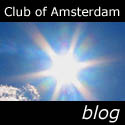 | Club of Amsterdam blog November 19: Sex, The Internet’s Own Wasteland November 8: Sexuality in the 21st Century? October 22: Alexandria burned – securing knowledge access in the age of Google September 6: Are chimeras part of our future? |
News about the Future

Saving the forest by the trees
Efforts to control global warming have focused largely on protecting forests and limiting the use of fossil fuels, which produce greenhouse gases such as carbon dioxide. Klaus Lackner is on the forefront of a complementary approach, commonly called carbon sequestration. It involves capturing and storing CO2 by technological means.
Lackner, the Maurice Ewing and J. Lamar Worzel Professor of Geophysics, is helping to develop a synthetic tree that he says could absorb nearly 90,000 tons of carbon dioxide a year — roughly the amount emitted annually by 15,000 cars. It would stand more than 300 feet tall and 180 feet wide and look like a huge football goalpost with venetian blinds between its uprights.

New technology removes microorganisms from fluids
Seldon has developed an exciting new technology that reliably removes microorganisms from fluids, without the use of heat, ultra-violet radiation, chemicals, contact time, or significant pressure. This technology has been the primary focus of the company’s efforts to date and is now ready for large-scale production.
Seldon’s product has the following attributes:
- Provides reliably clean water, free of bacteria and virus
- Effective against all microorganisms in water
- Does not require high pressure
- Environmentally benign
- Simple to operate and requires little maintenance
The product takes advantage of the most recent advances in nanotechnology to create a “kill zone” capable of destroying all shapes and all types of bacteria and virus, as well as other pathogenic microbes
Information Society and Health:
by Information Society Policy Link (ISPL), an initiative of DG Information Society and Media
More than 3.000 projects from information society programmes are being analysed, identifying a wealth of concrete results that support EU policies across all of the principal policy areas. By exchanging information and experiences, the Information Society Policy Link initiative helps to leverage the benefits of these activities for European policies.
Health is moving centre-stage in European policy. European citizens have a legitimate expectation for high-quality, accessible and sustainable healthcare and, more generally, quality of life. Improving health clearly plays an important role in addressing a number of societal developments like demographic changes, population ageing and labour shortages. As such health issues need to be addressed because of the role they play in achieving Europe’s full potential for prosperity, solidarity and security.
These objectives are reflected in the current EU Public Health Programme and the proposed successor programme scheduled to run from 2007 onwards, and contribute to the renewed Lisbon strategy for growth and jobs.
The increasing impact of ICT on health is recognised in the i2010 initiative — a European Information Society for Growth and Employment. It proposes a series of practical and applied actions for eHealth under the i2010 strand on inclusion and improving quality of life. The objective is to improve quality of health care while reducing its cost. Actions are designed to speed the takeup of eHealth solutions, remove obstacles to deployment, and support the growth and competitiveness of the eHealth industry.
The Commission is also working to provide the essential legal certainty regarding application of Community law to health services and, in parallel, to improve the quality and availability of Health Information for citizens and other health stakeholders.
A comprehensive Health Strategy will be adopted in 2007 to provide an overarching, strategic framework for improving health in the EU by supporting and complementing the work of the Member States. eHealth will certainly play a central role in this process, both as an enabler and a driver for change and improvement of health systems.
Not only are citizens’ expectations for quality and effectiveness of healthcare increasing but the citizens are also becoming more mobile and participating more actively in the information society. These developments can greatly increase future demand for a more widespread implementation of eHealth tools.
Challenges for Health
Health is an important priority for Europeans. We expect to be protected against illness and disease. We want to bring up our children in a healthy environment, and demand that our workplace is safe and hygienic.When travelling within the European Union we need access to reliable and high-quality health advice and assistance.
Healthcare is facing huge challenges. New drugs and advances in medical technologies are opening the way to more effective treatments, while the unravelling of the human genome is leading to totally new treatment regimes. Clinical practices are changing, too, requiring health practitioners to collaborate across disciplines and organisational boundaries.The whole philosophy of healthcare is shifting, towards placing a greater emphasis on health promotion and disease prevention, treating patients at the point of care, and moving towards more proactive self-care. All this is set against an important backdrop of an ageing European population and ever-increasing societal expectations of
health.
Patients are coming to expect a single point of entry to healthcare services that cuts across organisational boundaries and health services. Healthcare organisations are embracing the opportunities presented by the e-revolution. Providers are looking for ways to deliver health services to the patient as promptly and as locally as possible, while supporting contact and collaboration between healthcare professionals and patients throughout the care episode. Standardised patient medical records already assist the exchange of information between specialist hospital departments. Frequently hospitals have to work with other health agencies and providers as well. Clinical information is shared between different organisations and specialties, such as pharmacies, and
social and care services. Increasingly, this need extends beyond traditional care environments into the home itself.
The European Union has a vital role to play in the health arena through the obligations placed on it by the European Treaties.This role is being explored further. Community actions complement the Member States’ national health policies – as specified in Article 152 of the Treaty – and at the same time bring European added value. Cross-border health threats – for example influenza – and also effects of free movement throughout Europe of both patients and medical personnel need the integrated and coordinated response achieved through better sharing of information at the European level.
Health Policy
The EU Health Strategy, set out in May 2000, aims to integrate all EU health related policies and concentrate resources where the Community can provide real added-value, without duplicating the work of the Member States or international organisations.
Building on the 2000 EU Health Strategy and the related Public Health programme (2003-2008), in May 2006 the Commission adopted a Programme of Community Action in the Field of Health covering the period 2007-13.This aims to align future health action more explicitly with the overall Community objectives of prosperity, solidarity and security. Hence, it has three broad objectives:
- To improve citizens’ health security:
Actions will be taken to protect citizens against health threats including working to develop EU and Member State capacity to respond to threats. Objective One will also cover actions in the field of patient safety, injuries and accidents, community legislation on blood, tissues and cells, and international health regulation. - To promote health to improve prosperity and solidarity:
Actions will be taken to foster healthy active ageing and to help bridge inequalities, with a particular emphasis on the newer Member States. Steps will be taken to foster cooperation between health systems on cross-border issues such as patient mobility and health professionals. Objective Two will also cover action on health determinants such as nutrition, alcohol, tobacco and drug consumption as well as the quality of social and physical environments. - To generate and disseminate health knowledge o generate and disseminate health knowledge: under Objective Three, actions will be taken to exchange knowledge and best practice in areas where the Community can provide genuine added-value in bringing together expertise from different countries, e.g. rare diseases and cross-border issues related to cooperation between health systems. Gender health, children’s health and mental health issues will also be addressed. In addition, this Objective will allow for action to expand EU health monitoring and develop indicators and tools, as well as ways of disseminating information to citizens in a user-friendly manner, such as the health portal.
Health interests lie at the centre of people’s daily lives. By bringing these issues centre stage and proposing concrete action to meet citizens’ needs and concerns, the new programme will help to reinforce citizenship and to reconnect the EU with its citizens.
Many Community policies and actions have an impact on health and health systems across Europe.They are often developed within a different policy logic. Important health determinants cannot be influenced by health policy alone; there is a need for coordinated actions involving other policy areas – such as environmental, social or economic policies.The Commission works with experts in government and academia to improve understanding about the impact of EU policies and actions on health and health systems: how these impacts can be determined and measured, and how they can be taken into account in the policy cycle. Joint strategies and initiatives with other health-related policy areas are an important tool to ensure that health concerns are properly addressed from the start.
eHealth: Where the Information Society meets Health
Information and communication technologies (ICT) are making important contributions to European health policies, and paving the way towards completely new approaches to healthcare provision. ICT supports a two-fold paradigm shift in health delivery:
- from symptom-based to preventive healthcare and
- from hospital-centred to person-centred health systems.
Use of innovative ICT applications and services in healthcare can: - Accelerate the advancement of medical knowledge and improve the understanding
of disease-related processes. - Empower citizens to become actively involved in managing their own health.
- Improve the prevention and early diagnosis of many diseases, thus reducing overall healthcare costs and improving citizens’ quality of life.
- Enhance patient safety.
- Enable cost-effective management of chronic diseases.
- Facilitate active ageing and independent living for the ageing
population.
These synergies are reflected in the close interaction between the EU’s information society policies and activities and those related directly to healthcare.
Policy for eHealth
In support of the overall EU Health Strategy, in April 2004 the Commission adopted an action plan on eHealth – under the eEurope initiative which aims to establish a European eHealth Area.
Since the launch of the eHealth Action Plan, initiatives have been started in all of the Plan’s main action lines.They include: patient mobility; interoperability and integration; health cards and electronic health records; best (or good) practices; benchmarking and roadmapping; dissemination activities; conferences and special events; and legal, regulatory and other issues. Particular emphasis has been given to the sharing and publicising of eHealth experiences and best practices, and to coordinating the efforts of Member States through developing regional and national eHealth roadmaps.The Member States themselves are becoming more and more active in the field of eHealth.
Interoperability of health systems and services is a major challenge for individual Member States and for health sector actors. It is therefore a prime consideration
for both the European Commission and the Member States under the eHealth Action Plan. Interoperability will help resolve a number of pressing issues facing Europe’s healthcare systems and services. These include issues on the supply and demand sides, legal and regulatory issues, market requirements, and demographic and cost pressures. Consequently, interoperability is being tackled at various levels: organisational, technical, functional, and semantic.
The eEurope 2005 Action Plan has been superseded by the i2010 initiative, announced by the Commission in June 2005, which forms the information society component of the renewed Lisbon strategy to boost European competitiveness.
As the use of ICT grows, so does its impact on society. i2010 recognises this in three ways: making sure that ICT benefit all citizens; making public services better, more cost effective and more accessible; and improving quality of life. In the period 2005-2010, therefore, the practical and applied approach to eHealth is covered within the i2010 strand on improving quality of life. Concerns are mainly with contributing significantly to assuring improvements in quality, access, and efficacy of healthcare at the same time as supporting the growth and competitiveness of the eHealth industry.
Implementation of specific i2010 actions on eHealth are supported by a number of independent groups: the i2010 Subgroup on eHealth, representing key decision-makers and leaders of national eHealth initiatives in each Member State; an eHealth Stakeholders’ Group, representing technical, industry, standardisation, user associations and European co-financed projects; and ad hoc expert groups on emergency data sets and ePrescribing. Prime among these is the i2010 subgroup on eHealth which, among other tasks, is advising the Commission on the development of an EU health interoperability policy as it moves towards a Recommendation on eHealth interoperability in 2007.
[…]
This brochure is one of a series describing projects’ policy contributions and achievements covering around 20 policy areas. A separate series focuses on policy initiatives under i2010, the European Information Society for Growth and Employment. In addition, the initiative organises workshops to stimulate dialogue between researchers and policymakers on key policy issues. All publications plus information on policy workshops and other news are available via the ISPL website at:
http://ec.europa.eu/information_society/activities/policy_link
Recommended Book
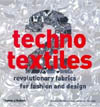
Techno Textiles 2: Revolutionary Fabrics for Fashion and Design
by Sarah E. Braddock Clarke, Marie O’Mahony
This book builds on the first edition’s theme of technologically-innovative textiles, with a focus on explaining the textiles and showing their applications in architecture, design, fashion and art. Many of the materials covered have origins in military, space or heavy industry (a shirt, for instance, made partially with metal alloys that “remember” their original shape has roots in the European space program), but have been transformed by engineers, designers, architects and artists into improved (or just different) versions of objects traditionally made with plastic or natural fabric, i.e. three-dimensional embroidery, used for a vascular prosthesis; ceramic-based fabrics that conduct very little heat and make ideal fuel filters and swimwear; and woven polypropylene, as used in architectural applications. Examples are presented in a thoughtful layout that includes hundreds of bright photographs. (Though the “Fashion” section, a fitful marriage of glossy fashion mags and dull techtalk, is lacking in the inspiration department.) The writing, however, runs the gamut from bland to clunky to grammatically or structurally flawed (“Fashion designers choose the new textiles largely for their progressive appearance and sometimes regardless of their supreme performance properties”) and can belabor the obvious. ( “Umbrella structures are used in many outdoor sites to provide protection from the elements.”) This book has a trove of information and eye candy, but its lack of writing chops makes it more a flip-through visual reference than a satisfying read.
Nano Fashion
Student designer and fiber scientists create a dress that prevents colds and a jacket that destroys noxious gases
By Anne Ju
Fashion designers and fiber scientists at Cornell have taken “functional clothing” to a whole new level. They have designed a garment that can prevent colds and flu and never needs washing, and another that destroys harmful gases and protects the wearer from smog and air pollution.
The two-toned gold dress and metallic denim jacket, featured at the April 21 Cornell Design League fashion show, contain cotton fabrics coated with nanoparticles that give them functional qualities never before seen in the fashion world.

Anne Ju/Cornell Chronicle
Design student Olivia Ong ’07 hugs two garments, treated with metallic nanoparticles through a collaboration with fiber scientists Juan Hinestroza and Hong Dong, that she designed as part of her fashion line, “Glitterati.”
Designed by Olivia Ong ’07 in the College of Human Ecology’s Department of Fiber Science and Apparel Design, the garments were infused with their unusual qualities by fiber science assistant professor Juan Hinestroza and his postdoctoral researcher Hong Dong. Apparel design assistant professor Van Dyke Lewis launched the collaboration by introducing Ong to Hinestroza several months ago.
(c) Michael Grace-Martin
Nicole Grospe ’07, left, and Andrea Clark ’07 model clothing designed by Olivia Ong ’07, at the Cornell Design League fashion show. The dress and jacket contain nanoparticles with antibacterial and air-purifying qualities.
“We think this is one of the first times that nanotechnology has entered the fashion world,” Hinestroza said. He noted one drawback may be the garments’ price: one square yard of nano-treated cotton would cost about $10,000.
Ong’s dress and jacket, part of her original fashion line called “Glitterati,” look innocently hip. But closer inspection — with a microscope, that is — shows an army of electrostatically charged nanoparticles creating a protective shield around the cotton fibers in the top part of the dress, and the sleeves, hood and pockets of the jacket.
“It’s something really moving toward the future, and really advanced,” said Ong, who graduates in December and aspires to design school. “I thought this could potentially be what fashion is moving toward.”
Dong explained that the fabrics were created by dipping them in solutions containing nanoparticles synthesized in Hinestroza’s lab. The resultant colors are not the product of dyes, but rather, reflections of manipulation of particle size or arrangement.
The upper portion of the dress contains cotton coated with silver nanoparticles. Dong first created positively charged cotton fibers using ammonium- and epoxy-based reactions, inducing positive ionization. The silver particles, about 10-20 nanometers across (a nanometer is one-billionth of a meter) were synthesized in citric acid, which prevented nanoparticle agglomeration.

Hong Dong
A scanning electron microscope image shows a cotton fiber with palladium nanoparticle coating.
Dipping the positively charged cotton into the negatively charged silver nanoparticle solution resulted in the particles clinging to the cotton fibers.
Silver possesses natural antibacterial qualities that are strengthened at the nanoscale, thus giving Ong’s dress the ability to deactivate many harmful bacteria and viruses. The silver infusion also reduces the need to wash the garment, since it destroys bacteria, and the small size of the particles prevents soiling and stains.
The denim jacket includes a hood, sleeves and pockets with soft, gray tweed cotton embedded with palladium nanoparticles, about 5-10 nanometers in length. To create the material, Dong placed negatively charged palladium crystals onto positively charged cotton fibers.
Ong, though strictly a designer, was drawn especially to the science behind creating the anti-smog jacket.
“I thought it would be cool if [wearers] could wipe their hands on their sleeves or pockets,” Ong said.
Ong incorporated the resultant cotton fiber into a jacket with the ability to oxidize smog. Such properties would be useful for someone with allergies, or for protecting themselves from harmful gases in the contaminated air, such as in a crowded or polluted city.
Planetary Coral Reef Foundation
Our Vision
To stop the destruction of the world’s coral reefs by 2020 and restore their beauty, health and abundance within this century.
The Planetary Coral Reef Foundation (PCRF) was founded in 1991 to address the coral reef crisis. Since its inception, PCRF has pursued an unprecedented global mission to preserve coral reefs through innovative programs in science, education and technology.
Coral reefs around the world are dying at an alarming rate. Lining 60,000 miles of shoreline along 109 countries, reefs and their related fisheries, marshlands and lagoons are vanishing. Home to more than a quarter of all fish species on Earth, an estimated 25% of coral reefs have already disappeared and an estimated 67% of all coral reefs are at risk today. In Southeast Asia, 88% of the reefs are at risk and an estimated more than 90% of the reefs in the Florida Keys have lost their living coral cover since 1975. In a recent study by the crew of our research vessel, Heraclitus, 100% of the corals in Kanton Island lagoon (Phoenix Islands in the remote South Pacific) were observed dead due to global warming. Threatened by pollution, disease, over-fishing, dynamite and cyanide fishing, as well as bleaching most likely caused by rising ocean temperatures, coral reefs are now endangered on a planetary scale.
The most important fact: There are solutions to this crisis.
As part of the scientific team of the Planetary Coral Reef Foundation, the crew of the Research Vessel Infinity gather data during intensive underwater studies as they continue to assess the health and vitality of coral reefs around the world. Observations are collected to add to the PCRF databank of impressions from reefs around the world.
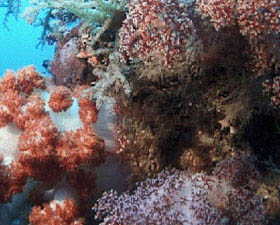
A soft coral garden in Rinja Island, Malaysia
Over 100,000 coral colonies have been analyzed around the world, each probed individually with the Vitareef methodology for their current state of health. These studies have been carried out since 1995 in Egypt, Oman, the Maldives, the Seychelles, Kenya, Indonesia, Vietnam, the Solomon Islands, Papua New Guinea, the Philippines, Malaysia, Thailand, Polynesia, Fiji, and the Great Barrier Reef. Three sites have been returned to in order to monitor their change over time.
Studio of the Sea is a floating movie and still image production platform, based on the Sailing Vessel Infinity. Its aim is to produce short films which expose the state of our oceanic planet, voyage through its island cultures, portray elements of a life at sea. A particular focus is placed on the concurrent beauty and collapse of our coral reef ecosystems. The Canary is Dead, a film produced by Studio of the Sea in 2004, has been aired on Current TV and Link TV.
Studio of the Sea owns a still and video image library, currently focusing on coral reefs, cetaceans, life at sea and Island cultures.
S/V Infinity
It is Spring 2010. The Coral Reef Satellite Mission (CRSM) was launched in 2008 and is circling our planet, transmitting real-time data about the state of the world’s coral reefs back to Earth daily. The ‘eye in the sky’ is performing beautifully, exactly as MIT’s Center for Space Research designed. The Science Operations Center at Scripps Institution of Oceanography has just completed the first global baseline map of coral reefs. People around the world are logging on to www.pcrf.org, downloading data and images for free, discovering the hidden world of coral reefs and witnessing the changes in their health and vitality. Response has been overwhelming and is building, with several million visits to the web site every day!
Our campaign to Save Coral Reefs is now making a difference on a planetary scale. Our vision – to stop the destruction of the world’s coral reefs by 2020 and restore their beauty, health and abundance within this century – is not only being realized, but is leading to the beginnings of an intelligent world community – NGO’s, governments and ordinary people – all working together for the future of Planet Earth.
Wastewater Gardens are a 100% ecological, low cost, low maintenance solution to the problem of human waste which is particularly important in coastal regions. Using no mechanical or moving parts and no chemicals, all wastewater is recycled via a gravity system into elegant, biodiverse gardens which produce lovely flowers as well as fruit and vegetables that can be eaten by humans and fodder crops for animal consumption. The systems are carefully sealed so no wastewater contaminates the soil, ground water or coastal waters.
Wastewater Gardens were developed by the Planetary Coral Reef Foundation and they have been successfully installed in Mexico, Bali, the Bahamas, Belize, France, Poland, the Philippines, the US and Australia. To date, the largest Wastewater Garden installed is located in the Xpu-Ha EcoPark near Akumal Mexico which was designed to recycle all the human waste produced by up to 1500 visitors a day.
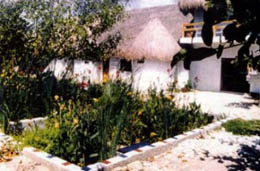
Mexico
Santa Fe, New Mexico
Bali, Indonesia
NW Australia
##
“It’s vital that the public understands that the lack of sustainability in the world’s carbon emissions is causing the rapid loss of coral reefs, the world’s most biodiverse marine ecosystem,” said Drew Harvell, Cornell professor of ecology and evolutionary biology and head of the Coral Disease Research Team, which is part of the international Coral Reef Targeted Research (CRTR) group that wrote the new study.
Agenda

| The Season Events are on Thursdays Registration: 18:30-19:00, Conference: 19:00-21:15 | ||
| January 31 18:30 – 21:15 | the future of Fashion Lifestyle & Technology Location: AMFI-Amsterdam Fashion Institute, Mauritskade 11, 1091 GC Amsterdam, Near corner Wibautstraat / Mauritskade | |
| February 28 18:30 – 21:15 | the future of NanoEnergy Location: Syntens, De Ruyterkade 5, 1013 AA Amsterdam [Building of the Chamber of Commerce] | |
| March 20 18:30 – 21:15 | the future of Ecological Architecture | |
| April 24 18:30 – 21:15 | the future of Money | |
| May 29 18:30 – 21:15 | the future of Children | |
| June 26 18:30 – | Taste of Diversity – the future of INDIA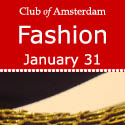 |
Club of Amsterdam Open Business Club
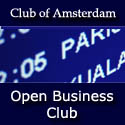 | Club of Amsterdam Open Business Club Are you interested in networking, sharing visions, ideas about your future, the future of your industry, society, discussing issues, which are relevant for yourself as well as for the ‘global’ community? The future starts now – join our online platform … |

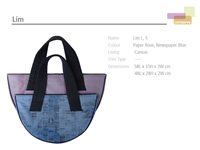
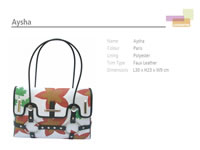
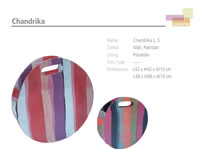

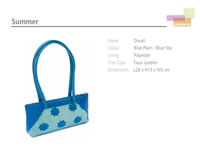




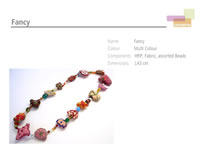

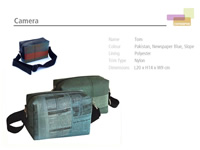


Customer Reviews
Thanks for submitting your comment!